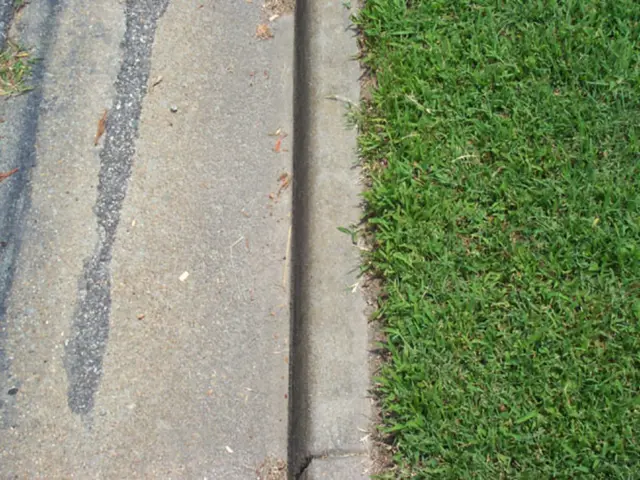Distinguishing Age Spots from Skin Cancer: A Guide to Recognition
Understanding the Distinction Between Age Spots and Skin Cancer
As individuals age, two common skin conditions may arise: age spots and skin cancer. While they might appear similar, it is crucial to recognize the differences between these conditions to ensure proper medical attention is sought.
Age spots, known as solar lentigines or liver spots, manifest as smaller, darker patches on the skin. They typically exhibit a flat and smooth texture, and while they can appear on areas often exposed to the sun, such as the face, hands, or shoulders, they do not itch or feel crusty. These spots develop due to the body producing excess melanin, a pigment that protects the skin from harmful UV radiation.
Skin cancer, on the other hand, is a formidable health concern that can potentially spread to other parts of the body. Like age spots, skin cancer is primarily caused by excessive sun exposure or UV tanning bed usage. The three most common types of skin cancer are basal cell carcinoma, squamous cell carcinoma, and melanoma.
Basal cell carcinoma appears as raised, smooth, shiny, pearly bumps that may be white, yellow, or waxy. Squamous cell carcinoma presents as a red, scaly, crusty, or bleeding patch, often firm with a wart-like or persistent sore-like appearance. These types of skin cancer may cause pain, itching, or bleeding, and can potentially impact a person's overall health if left untreated.
Actinic keratosis, a precancerous growth, can also resemble age spots, albeit with raised, rough, or scaly patches, or red, pink, brown, or skin-colored exfoliating lesions. If left unchecked, this condition may progress to squamous cell carcinoma.
To determine whether a skin growth is an age spot or skin cancer, individuals should monitor changes in their skin. Key differences between the two conditions include size, shape, texture, and color. An age spot will be smaller, flat, and smooth, while a cancerous growth will be larger and may display irregular edges, multiple colors, or other distinguishing features.
In case of any unusual skin changes, seeking medical advice is essential to ensure early detection and proper treatment. Consult a healthcare professional if:
- There are any potential signs of skin cancer, such as changes in color, size, shape, or location, or any growth that appears different from other marks on the skin.
- A mark on the skin itches, crusts, scabs, or bleeds and does not heal within four weeks.
Diagnosis is typically conducted through a physical examination by a dermatologist, who assesses the appearance, texture, and placement of a spot to determine if it may be something other than an age spot. In some cases, a skin biopsy may be necessary to test for skin cancer or other conditions.
Treatment options for age spots and skin cancer differ significantly. Age spots do not require medical treatment as they are not harmful and have no signs or symptoms. However, some individuals may choose to have treatment for cosmetic purposes.
Skin cancer treatment depends on various factors, including the type and stage of cancer and an individual's health history. Surgical removal is often the preferred method for basal cell and squamous cell cancers, but alternative options such as topical therapies, radiation therapy, chemotherapy, and immunotherapy may be considered.
Actinic keratosis, being a precancerous condition, requires attention to prevent progression to squamous cell carcinoma. Cryotherapy, topical therapies, photodynamic therapy, or curettage may be employed to treat actinic keratosis.
In summary, while age spots, skin cancer, and actinic keratosis can appear similar, individuals should closely monitor changes in their skin. A professional medical consultation is crucial for early detection, diagnosis, and appropriate management of these conditions to improve health outcomes.
- Seniors may develop either age spots or skin cancer as they age, and while age spots are harmless and typically appear as small, flat, and smooth patches, skin cancer can potentially spread and requires immediate medical attention.
- Dermatology is essential in the diagnosis and treatment of various skin conditions, including age spots, skin cancer, and melanoma, which is a dangerous type of skin cancer that can be challenging to detect.
- When it comes to health-and-wellness and skin-care, it's crucial to understand the signs of skin cancer, such as changes in color, size, shape, location, or abnormalities like itching, crusting, scabbing, or bleeding, which may indicate a medical condition like skin cancer or actinic keratosis.
- In the field of oncology, scientists are continually researching innovative ways to treat and prevent different types of cancer, including skin cancer, to reduce the impact on an individual’s overall health.
- Proper medical attention can help in the early detection and treatment of various skin conditions like age spots, skin cancer, and skin-conditions, ensuring that individuals can maintain their health and wellness in the long run.








